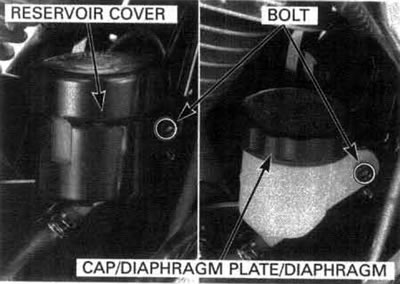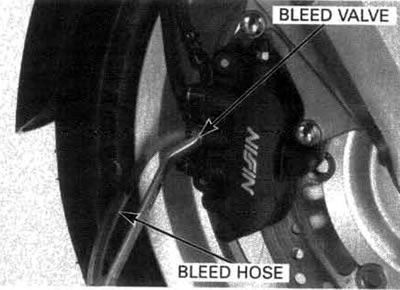When using a commercially available brake bleeder, follow the manufacturer's operating instructions.
A contaminated brake disc or pad reduces stopping power. Discard contaminated pads and clean a contaminated disc with a high quality brake degreasing agent.
Make sure the master cylinder is parallel to the ground, before removing the reservoir cover.
Front
Turn the handlebar to the left until the reservoir is level.
Remove the screws, reservoir cap, diaphragm plate, diaphragm and float.

Connect a bleed hose to the upper bleed valve.
Loosen the upper bleed valve and pump the brake lever.
Stop operating the brake when fluid stops flowing out of the upper bleed valve.

Do not allow foreign material to enter the system when filling the reservoir. Avoid spilling brake fluid on painted, plastic or rubber pans. Place a rag over these parts whenever the system is serviced.
Rear (linked)
Remove bolt and the reservoir cover.
Install the bolt.
Remove the reservoir cap, diaphragm plate and diaphragm.

Connect a bleed hose to the front caliper lower bleed valve.
Loosen the front caliper lower bleed valve and pump the brake lever.
Stop operating the brake when fluid stops flowing out of the front caliper lower bleed valve.
Tighten the front caliper lower bleed valve securely.

Connect a bleed hose to the rear caliper bleed valve.
In the same manner as at the caliper bleed valve (above procedure), drain the brake fluid from the rear caliper bleed valve.

